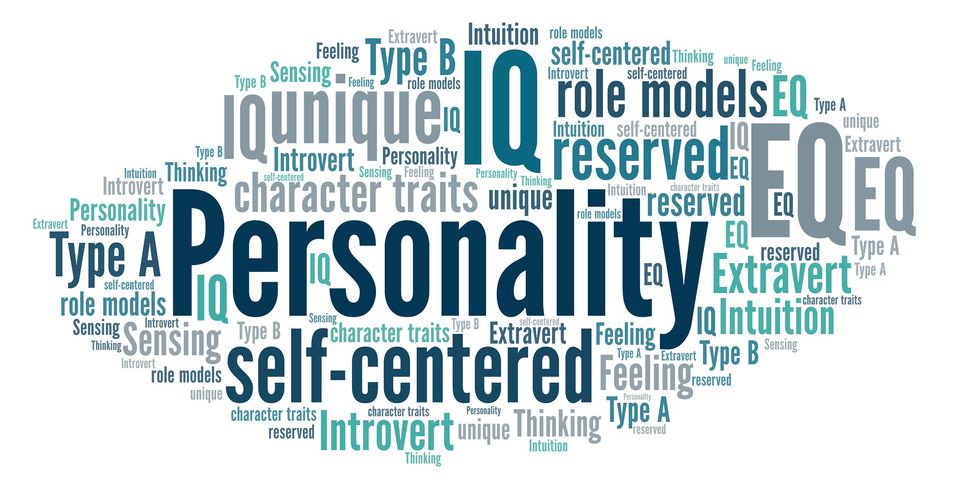What Are the Character Traits that Ground Who You Are — Good and Bad?

A Personal Evolution Process (PEP) to discover your dominant attitudes and behaviours.
What does it mean when you say, ‘That person has no character?’
Usually, it’s used either as a polite insult or a condemnation of someone who you probably can’t trust. When you can’t trust someone, it’s because you don’t know who they are, meaning, you don’t know what they value. They might act shifty, never embodying or demonstrating a consistent set of character traits which makes it difficult to discern what they stand for, or what’s important to them. Without character, we can’t relate to another person, for the simple reason that there’s no ‘level ground’ that’s common between the two of you.
Before we get started, in my recent article, “Human(e) Thought Leadership: How to Be the Change for the Common Good Through Self-Mastery,” I suggested doing a short exercise to list the top 10 characteristics you aspire to or regularly demonstrate in your life. If you’re able to read that article and do the exercise before moving forward, you will get even more value out of today’s Personal Evolution Process.
What Are Character Traits?
A simple way of framing character traits is to think of an actor playing a character in a movie. The actor needs to embody the character’s attitude and personality for the viewer to believe how the actor is behaving. Character traits are what we use to describe who we are and how we act. For example, you can describe someone’s character as kind, thoughtful, aggressive, or aloof. The traits that we most embody are like the windows of a home through which people can see you as you truly are.
Your dominant character traits describe and demonstrate what you value and believe in. These are the qualities that support your integrity. When you stand your ground in the truth of your authentic nature, you are doing so without the need to be conscious of choosing your actions. For example, one of my core values in life is contentment or peace of mind. Some character traits that support this value are being thoughtful, calm, open-minded, mindful, focused, and understanding. It is also just as authentic for me to jump to conclusions, be completely distracted, and be unwilling to compromise.
Here are some common, so-called ‘positive’ character traits:
- kindness, peaceful, loving, optimism, tolerance, cooperation, adventurous, curiosity, ambitious, enthusiastic, confident, trustful, resourceful, leadership, etc.
We’re all human, so of course, we also embody character traits that can get us into trouble, including,
- rudeness, impatience, disrespectful, greed, cruelty, unforgiving, pessimistic, argumentative, etc.
What behaviours and attitudes do you regularly demonstrate that are representative of your authentic self? Which ones are you working on and practicing that you would like to enjoy ‘being’ more often? If you’re ready to find out more about why you embody some character traits more than others, read on.
Personal Evolution Process: Your Character Traits
Step 1 — Define Your Negative & Positive Character Traits.
In my article, “Human(e) Thought Leadership: How to Be the Change for the Common Good Through Self-Mastery,” I invited you to consider your positive character traits and qualities and to write them down as a simple list. In this exercise, I invite you to create clear definitions for both your positive and negative characteristics.
Make a list of your character traits
If you find yourself stuck trying to name and identify character traits, refer to this list or Google “list of character traits” for more examples.
- Make a list of your top 20 positive characteristics. If you did the exercise from the previous article, start with that list.
- Next, make a list of your top 20 negative or undesirable characteristics. Hint: these are sometimes the opposite of your positive character traits.
- From each list, define your top three positive and top three negative character traits. These are the behaviours others see in your personality — and have possibly told you so. You might identify your top negative traits as the attitudes and behaviours that get you into the most trouble or make life more difficult.
- In a few sentences, describe how each of your top three positive and negative characteristics relates to who you are and what’s most important to you.
For the next step in this Personal Evolution Process, we will use an alternative perspective to refine how you can show up as your most authentic self. You will discover the conditions you need to be aware of to manage showing up as your “least desirable self.”
Step 2 — Refine Your Negative & Positive Qualities.
In this step, you will refine your understanding of your character and personality from an alternate perspective. If this makes your brain hurt, that’s okay. Be kind to yourself with this exercise. It’s not designed to make you feel bad or ashamed. Instead, pursue this exercise as if you were a scientist. You have been given a sample of something to examine under the microscope. When you look at what’s on the slide under the lens, make objective and detailed notes about what you see, without judgement or prejudice.
If you start to feel stressed, put your pen down, take a few deep breaths, and get up and move around. Come back and complete this process when you feel calm and focused. The outcome of this work is to help you shine a light on the characteristics you want to enjoy more of in life and to understand the nature and circumstances of the behaviours you want to avoid.
Questions to refine your negative and positive characteristics
- What are the unwanted or problematic results of spending time and energy in your top three negative character traits? Write an answer for each negative trait.
- Who are you being? What are you saying, doing, and thinking when you are spending most of your time in your three negative behaviours or attitudes?
- Now for the light! What are the unwanted or problematic results of not experiencing your top positive character traits? Write an answer for each positive trait.
- When you regularly experience your top positive behaviours, who are you being? What are you saying, doing, and thinking?
In the final step, we will conclude this process with an exercise to help you more easily and frequently get into alignment with your positive character traits.
Step 3 — Align with Your Positive and Negative Qualities.
You might be wondering, ‘Why do you want me to align with my negative character traits? Wouldn’t it be better for me to avoid the dark side?’ Here’s a truth that might seem like a paradox, and certainly goes against the rather unproductive cliché, ’just think positive.’
You cannot be your best self by denying or suppressing the parts you dislike.
In fact, the qualities we dislike about ourselves can be the greatest impetus for transformative and impactful change in our life. We cannot avoid the dualistic nature of our character traits — we need both the positive and the negative to have the possibility of balance and awareness. You cannot know sad without knowing happy, just as you cannot know how to be rude without knowing how to be polite or respectful.
Case in point: What I am sharing with you in this process comes from my desire for peace of mind and self-mastery. I have struggled in my life with anger, emotional reactivity, lack of self-love and acceptance, and feeling like an outsider. I had to learn how to get into alignment with the negative parts of who I am — the parts I disliked — before I could understand what I needed to learn from these challenging attitudes and behaviours.
How to align with your negative & positive characteristics
To align or get in alignment by definition means to,
- Arrange in a straight line; adjust according to a line
- Bring into cooperation or agreement with a particular group, party, cause, etc.
In other words, we need to be in emotional alignment with our dominant or most frequent character traits, irrespective of them being positive or negative. When you associate corresponding emotions with your top behaviours, you will be more aware of how you want to feel most of the time. This is how you can get to your preferred way of feeling more quickly when you slide into the negative of less desirable character traits.
- How do you want to feel most of the time? What are the most important emotions you want to experience that are associated with embodying each one of your top three positive character traits? Write an answer for each of your top three.
- What are the emotions you want to feel when you realize you have slipped into one of your top negative behaviours? What do you want to feel instead of experiencing one of your negative characteristics? Write an answer for each one.
- What specific emotions have you repeated in your answers to the questions above? Make a list of those emotions — these are your core emotional drivers for living with integrity — your go-to emotions for living in alignment with your best self.
- What habits or behaviour can you practice to experience more of these core emotions? Who can you spend more time with? What would you let go of? How would experiencing these core emotions every day change your life?
That’s a wrap for this Personal Evolution Process
If you have a question, drop me a line in the comments!





Member discussion